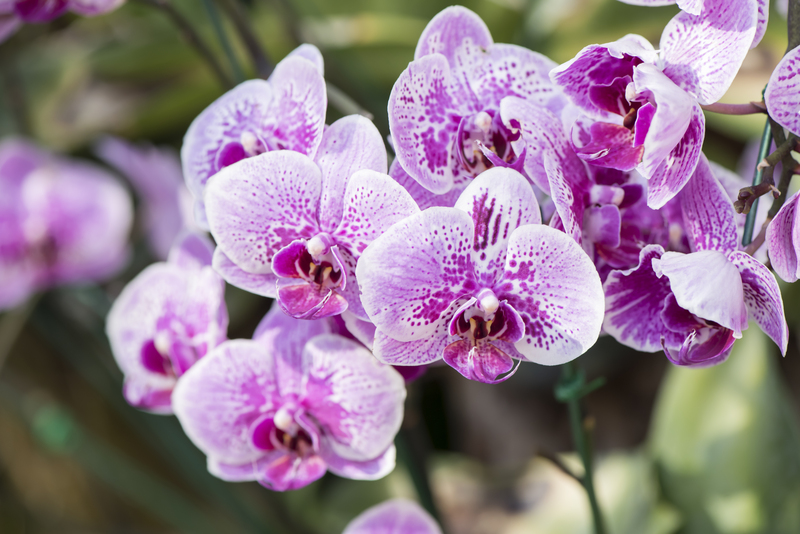Creating a Vibrant Garden Space for Young Explorers
Posted on 01/07/2025
Creating a Vibrant Garden Space for Young Explorers
Are you wondering how to foster curiosity and a love for nature in your children? Creating a vibrant garden space for young explorers is one of the most rewarding projects you can undertake as a parent, teacher, or community member. Gardens do more than beautify outdoor spaces--they provide opportunities for learning, creativity, and memorable adventures. In this comprehensive guide, discover how to design an inviting, interactive, and safe environment where kids can connect with nature and embark on endless discoveries.
Why Cultivate a Garden Designed for Young Explorers?
Children are naturally curious. A colorful and dynamic garden can spark wonder, foster independence, and provide sensory stimulation. Today, many kids are glued to screens, so creating a garden oasis encourages outdoor play and exploration. Here are a few key benefits:
- Physical development: Climbing, digging, and running help children improve coordination, balance, and strength.
- Emotional well-being: Green spaces are proven to reduce stress and promote relaxation.
- Learning opportunities: Gardens are ripe for STEM education--biology, ecology, math, and more come alive outside.
- Creativity boost: Natural materials and open space inspire inventive play.
- Social skills: Interacting in shared garden areas nurtures cooperation and communication.

Planning Your Garden for Young Adventurers
Every children's garden space should be unique, but a little planning ensures your site is both engaging and safe. Consider the following essential steps as you begin:
1. Assess Your Outdoor Area
Start by examining your available space. Is it a sunny backyard, a shady nook, a school courtyard, or a community park plot? Take note of:
- Sunlight and shade patterns
- Potential hazards (thorny plants, water, chemicals)
- Proximity to home or classroom
- Soil quality and drainage
- Accessibility for all children, including those with disabilities
2. Involve the Kids
A garden becomes truly magical when kids help plan it. Ask young explorers what plants or features they'd like:
- Favorite colors or scents
- Interest in growing vegetables or attracting butterflies
- Spaces for quiet reading vs. active play
Children's input not only increases their engagement but also empowers them with a sense of ownership.
3. Design for Exploration and Learning
Map out a variety of zones for your vibrant garden:
- Sensory beds with aromatic plants and textured leaves
- Creepy-crawly zones for bug-watching
- Paths that wind and invite discovery
- Open spaces for games and imaginative play
- Water features or mud kitchens for tactile fun
Choosing Child-Friendly Plants
When creating a vibrant garden space for kids, plant selection is crucial. Aim for a variety of colors, heights, fragrances, and textures while prioritizing safety and resilience. Here are some key considerations:
Non-Toxic and Safe Plants
Always choose non-toxic species. Steer clear of plants with poisonous berries, irritating sap, or sharp thorns. Excellent options include:
- Sunflowers
- Snapdragons
- Lavender
- Nasturtiums (edible flowers)
- Marigolds and pansies
- Herbs (basil, mint, thyme)
- Strawberries and bush beans
Plants for the Senses
A truly vibrant explorer's garden awakens all five senses:
- Sight: Bold, contrasting colors; towering sunflower stalks; patterned leaves
- Touch: Fuzzy lamb's ear, smooth succulents, bumpy pumpkin vines
- Smell: Mint, lemon balm, gardenia, rosemary
- Taste: Cherry tomatoes, sugar snap peas, edible flowers
- Sound: Bamboo canes in the breeze, tall grass that rustles, talking wind chimes
Incorporating Fun Features and Structures
The best gardens for young adventurers go beyond plants. Think about interactive elements that promote experimentation, creativity, and play.
Paths, Mazes, and Hideouts
- Create winding paths using stepping stones, logs, or bark mulch.
- Plant a living willow tunnel or sunflower house for a magical hideaway.
- Small-scale mazes with low hedges or beds encourage exploration.
Natural Play Structures
- Balance beams made from logs or stumps
- Sand and mud play stations for sensory adventures
- Simple tree stumps as "thrones" or tables for tea parties
- DIY bug hotels to attract beneficial insects
- Birdhouses and feeders to introduce local wildlife
Artistic Touches and Garden Crafts
- Let kids paint rocks as garden markers or decorations
- Wind catchers and homemade mobiles for visual interest
- Chalkboards or mural walls for artistic expression
- Colorful pots and upcycled planters
Encouraging Curiosity With Garden Activities
With your garden paradise for young explorers established, keep curiosity alive with engaging activities:
- Planting seeds and watching them grow
- Bug hunts and nature scavenger hunts
- Journaling or sketching garden discoveries
- Seasonal taste tests of fruits and veggies
- Observation of butterflies, birds, and worms
Use simple gardening tools sized for children to instill responsibility and teach real-life skills.
Safety First: Designing for Peace of Mind
A child-friendly vibrant garden is also a safe space. Follow these essential tips:
- Check all plants for toxicity and allergy potential
- Ensure clear paths and remove trip hazards
- Fence off water features or supervise closely
- Keep sharp tools or chemicals out of reach
- Choose sturdy structures designed for children's rough-and-tumble play
- Provide shade and plenty of drinking water
Adapting the Garden for All Ages and Abilities
Inclusivity is key to designing the perfect garden space for kids. Make sure your layout is welcoming by considering:
- Raised garden beds for easier access
- Wide, smooth paths for strollers and wheelchairs
- Seating areas for rest and observation
- Low-maintenance plants for beginner gardeners
- Quiet nooks for children who need downtime
Seasonal Changes and Year-Round Interest
Keep your garden vibrant all year by designing for every season. Choose:
- Spring bulbs like crocus and daffodils for early color
- Summer annuals and edible crops for ongoing excitement
- Autumn foliage and seed heads for texture and color
- Evergreens, decorative grasses, or bird feeders for winter
Rotate plants, introduce new features, and decorate for holidays to maintain continual allure.
Maintenance Tips to Keep the Adventure Thriving
Gardening skills are learned through experience. Involve kids in regular maintenance to give them a sense of responsibility and pride:
- Watering with child-sized cans or hoses
- Weeding and mulching
- Pruning with safe, age-appropriate tools
- Composting food scraps and garden waste
- Monitoring for garden pests--encourage natural solutions over chemicals

Celebrating Success: Sharing the Harvest and Playing Together
One of the greatest joys of a vibrant explorer's garden is sharing the bounty and fun. Organize:
- Family picnics in the garden
- Farm-to-table snack parties featuring harvested fruits and veggies
- Show-and-tell days for children's plant projects
- Neighborhood garden tours to inspire others
Capture the Memories
- Encourage kids to take photos or draw garden scenes
- Create a scrapbook or blog chronicling your garden's progress
- Mark special occasions with planted "memory trees" or flowers
Conclusion: Planting Roots for Lifelong Adventure
Creating a vibrant garden space for young explorers is a journey--not just an end result. Whether you're cultivating a wildflower meadow, a vegetable patch, or a miniature jungle, each day in the garden promises fresh discoveries and cherished moments. By planning with creativity, safety, and inclusivity in mind, you provide a nurturing environment where children thrive, learn, and dream. So roll up your sleeves, gather your young adventurers, and let your garden story begin!
Ready to transform your yard or schoolyard into a paradise for curious minds? With thoughtful design, vibrant plants, and plenty of opportunities for play, your garden for young explorers will grow as beautifully as the children who tend it.
Quick Checklist: Essential Features for a Children's Discovery Garden
- Non-toxic, colorful plantings
- Sensory and edible gardens
- Winding paths and creative hideaways
- Interactive play and art areas
- Safe structures and accessible design
- Opportunities for hands-on learning and maintenance
Let your garden be the setting for a thousand adventures!



